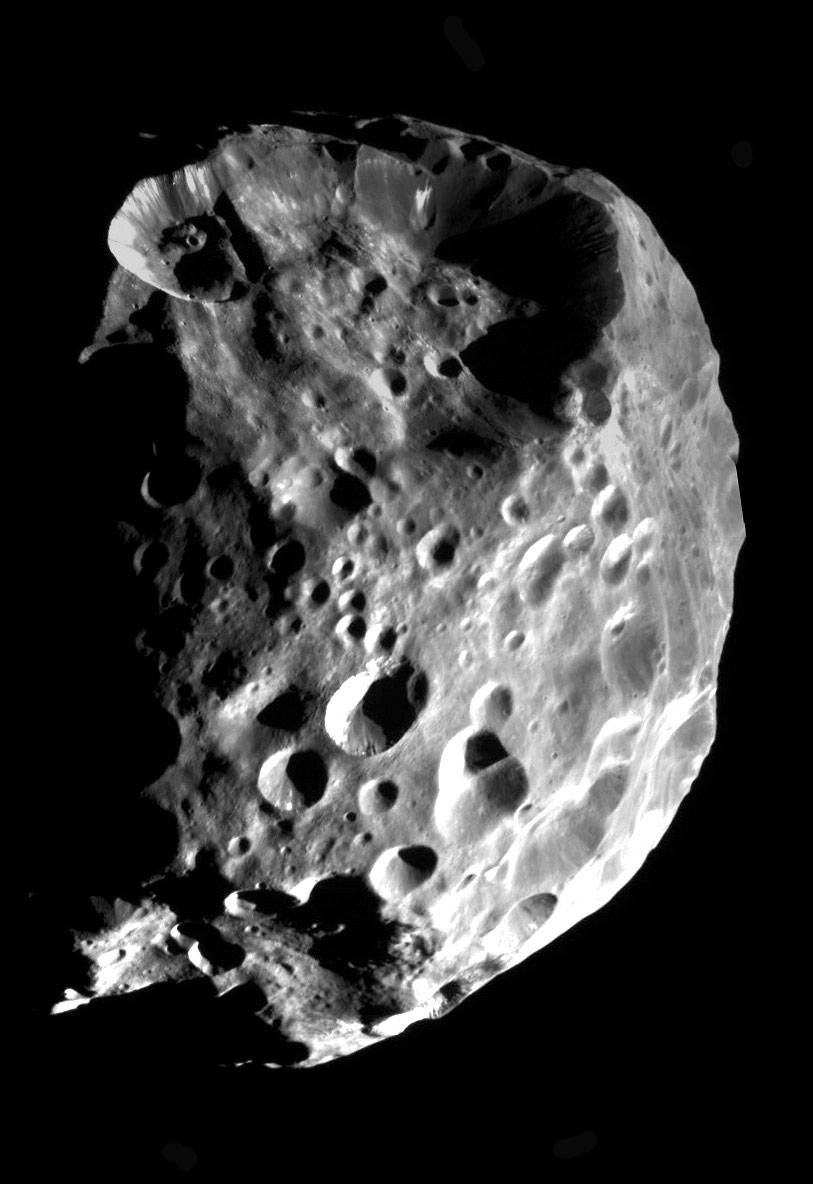
Phoebe’s true nature is revealed in startling clarity in this mosaic of two images taken during Cassini’s flyby on June 11, 2004. This image of Saturn’s moon shows evidence for the emerging view that Phoebe may be an ice-rich body coated with a thin layer of dark material. Small bright craters in the image are probably fairly young features. This phenomenon has been observed on other icy satellites, such as Jupiter’s Ganymede.
When impactors slammed into the surface of Phoebe, the collisions excavated fresh, bright material – probably ice – underlying the surface layer. Further evidence for this can be seen on some crater walls where the darker material appears to have slid downwards, exposing more light-colored material. Some areas of the image that are particularly bright – especially near lower right – are over-exposed.Image credit: NASA/JPL/Space Science Institute


























